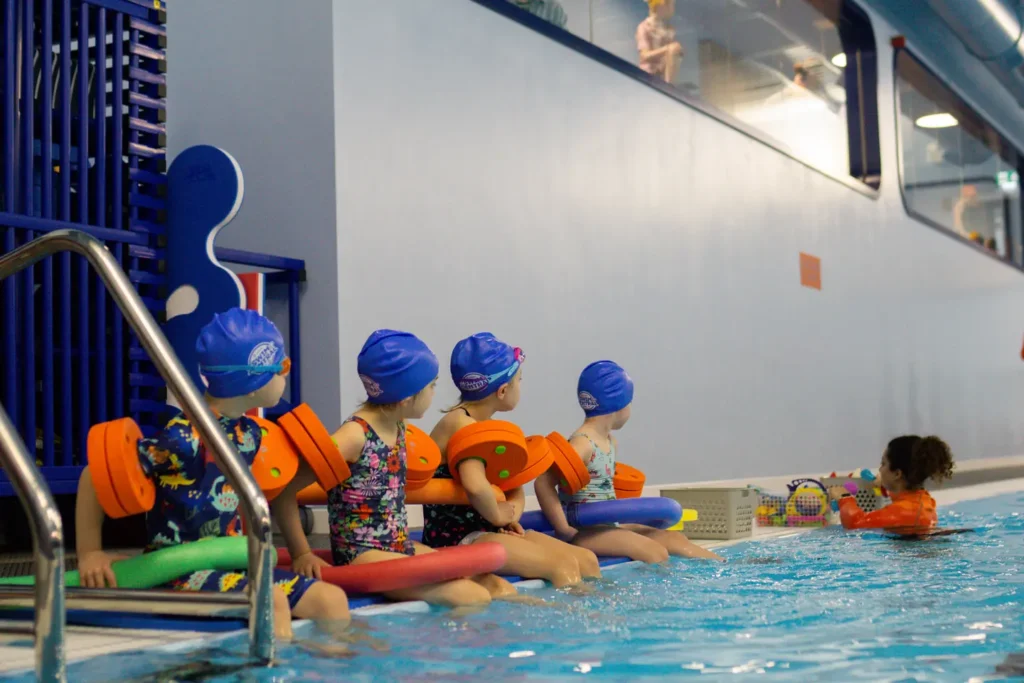As the new school year approaches, many parents find themselves navigating the world of term-time swimming lessons. This mandatory part of the curriculum plays a crucial role in ensuring children’s safety and confidence in the water. In this comprehensive guide, we’ll explore everything you need to know about term time swimming, from its importance to practical preparation tips.
Why Swimming Lessons Are Mandatory in the UK
Term-time swimming is a compulsory part of the national curriculum for primary school children in England and Wales. This requirement typically applies to children in Key Stage 1 and 2, which generally covers ages 5 to 11. The government has mandated these lessons to address a critical life skill, recognising that swimming is not just a recreational activity but a potentially life-saving ability.
The primary goal of term-time swimming is to ensure that by the time children leave primary school, they can:
- Swim competently, confidently, and proficiently over a distance of at least 25 meters.
- They should also be able to use a range of strokes effectively
- Perform safe self-rescue in different water-based situations.
These skills form the foundation of water safety and can be crucial in preventing water-related accidents.
Frequency and Duration
The frequency of term-time swimming lessons can vary depending on the school and local resources. Typically, schools aim to provide weekly lessons for a term or two each year. Some schools might opt for intensive courses over a shorter period. The duration of each lesson is usually around 30 to 45 minutes, allowing enough time for meaningful instruction and practice without overwhelming young learners.
Preparing Your Child for Swimming Lessons
Preparing your child for term-time swimming is crucial in ensuring a positive experience. Many children may feel anxious or apprehensive about these lessons, especially if they’re not familiar with swimming pools or have had limited exposure to water activities. As a parent, there are several steps you can take to ease this transition and set your child up for success.
One effective approach is to introduce your child to the pool environment before their school lessons begin. Consider taking family trips to the local swimming pool for family fun swims. These visits can help your child associate the pool with fun and enjoyment. During these trips, you can gently introduce basic water skills like putting their face in the water or floating in the water whilst you support them. This familiarisation can significantly reduce anxiety when their school lessons begin.
Communication is key in preparing your child. Explain what term time swimming entails, emphasising the importance of learning to swim and the fun aspects of the experience. Listen to any concerns they may have and address them with patience and understanding. You might share positive stories about your own swimming experiences or those of older siblings to build enthusiasm.
Another valuable preparation method is enrolling your child in swimming lessons before term time swimming begins. These additional lessons can provide a head start, helping your child develop basic skills and water confidence. With some experience under their belt, they’re likely to feel more comfortable and capable when school lessons commence. These lessons also offer the advantage of more personalised attention as they have smaller class sizes, allowing instructors to address individual needs and fears effectively.
What to Pack
Proper preparation extends to packing the right gear for swimming lessons. A well-packed swim bag can make a significant difference in your child’s comfort and readiness for their lessons. Start with the basics:
- A well-fitting swimsuit
- A towel
- A swimming cap
- Toiletries like body wash, shampoo and conditioner
- An empty carrier bag or waterproof bag to put wet items in
- Spare clothes and underwear (if they aren’t changing back into their uniforms)
- A warm jacket and hat for the winter so they don’t get cold with wet hair
- For children with longer hair, a brush or comb can be useful for detangling after swimming.
- Snacks and water
- Locker coins – Some facilities require safe storage of items which require coins and some allow poolside storage so it’s always best to check with the school what your child will need.
If your child has any specific medical needs, such as asthma inhalers or allergy medications, ensure these are packed and that the school and swimming instructors are aware of any health considerations.
Beyond the Basics of Term-time Lessons
While term-time swimming provides essential skills, it’s important to recognise its limitations. The national curriculum focuses on basic swimming competence and water safety. However, there’s much more to learn beyond these foundational skills.
Consider supplementing term time lessons with additional instruction. Private or group lessons outside of school can help your child progress faster and develop more advanced techniques. These extra sessions can cover a wider range of swimming strokes, improve endurance, and even introduce elements of competitive swimming if your child shows interest. Moreover, regular practice outside of school lessons can significantly enhance skill retention and confidence.
Supporting Your Child’s Journey
As your child embarks on their term time swimming journey, your support and encouragement play a vital role. Celebrate their progress, no matter how small. Learning to swim is a significant achievement, and each milestone, from putting their face in the water to swimming their first full length, deserves recognition.
Stay engaged with their learning process. Ask about their lessons, what they enjoyed, and any challenges they faced. This not only shows your interest but also helps you identify any areas where they might need additional support or encouragement.
Remember that every child progresses at their own pace. Some may take to the water naturally, while others might need more time to build confidence. Patience and positive reinforcement are key to fostering a lifelong love for swimming and water activities.

